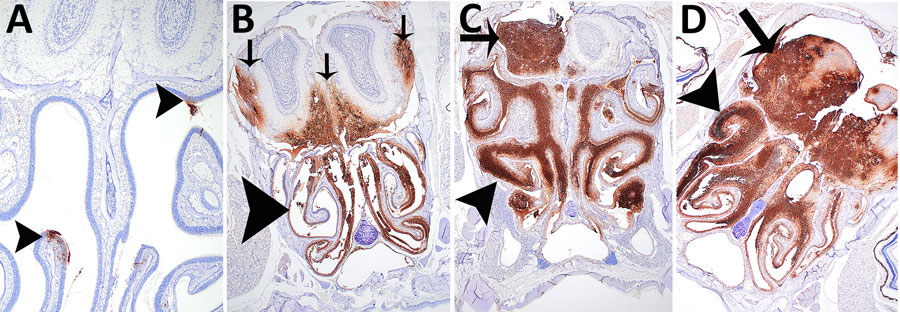Disclaimer: Early release articles are not considered as final versions. Any changes will be reflected in the online version in the month the article is officially released.
Virulence of Burkholderia pseudomallei ATS2021 Unintentionally Imported to United States in Aromatherapy Spray
Christopher K. Cote

, Kevin D. Mlynek, Christopher P. Klimko, Sergei S. Biryukov, Sherry Mou, Melissa Hunter, Nathaniel O. Rill, Jennifer L. Dankmeyer, Jeremey A. Miller, Yuli Talyansky, Michael L. Davies, J. Matthew Meinig, Stephanie A. Halasohoris, Anette M. Gray, Jade L. Spencer, Ashley L. Babyak, M. Kelly Hourihan, Bobby J. Curry, Ronald G. Toothman, Sara I. Ruiz, Xiankun Zeng, Keersten M. Ricks, Tamara L. Clements, Christina E. Douglas, Suma Ravulapalli, Christopher P. Stefan, Charles J. Shoemaker, Mindy G. Elrod, Jay E. Gee, Zachary P. Weiner, Ju Qiu, Joel A. Bozue, Nancy A. Twenhafel, and David DeShazer

Author affiliations: United States Army Medical Research Institute of Infectious Diseases, Fort Detrick, Frederick, Maryland, USA (C.K. Cote, K.D. Mlynek, C.P. Klimko, S.S. Biryukov, S. Mou, M. Hunter, N.O. Rill, J.L. Dankmeyer, J.A. Miller, Y. Talyansky, M.L. Davies, J.M. Meinig, S.A. Halasohoris, A.M. Gray, J.L. Spencer, A.L. Babyak, M.K. Hourihan, B.J. Curry, R.G. Toothman, S.I. Ruiz, X. Zeng, K.M. Ricks, T.L. Clements, C.E. Douglas, S. Ravulapalli, C.P. Stefan, C.J. Shoemaker, J. Qiu, J.A. Bozue, N.A. Twenhafel, D. DeShazer); Centers for Disease Control and Prevention, Atlanta, Georgia, USA (M.G. Elrod, J.E. Gee, Z.P. Weiner)
Main Article
Figure 10

Figure 10. Immunohistochemical analyses of head sections of C57BL/6 mice exposed to aerosolized Burkholderia pseudomallei strain ATS2021, the causative strain in an an outbreak of 4 cases, 2 of them fatal, in the United States in 2021. Shown are the nasal cavity (including nasal turbinates, nasal septum, respiratory and olfactory epithelium, lamina propria with supporting tissues and glands, nerve bundles, and nasal air passages); cribriform plate (bone and olfactory/trigeminal nerves); and cranial vault with olfactory bulb. A) Day 1 after exposure, dose 1,150 CFU, shows multifocal minimal positivity of the nasal cavity epithelium (arrowheads), which is most likely olfactory epithelium of the ethmoid turbinate. Original magnification ×2. B) Day 3 after exposure, dose 4,490 CFU, showing diffuse marked positivity of the nasal cavity epithelium (arrowhead) and multifocal moderate positivity of the olfactory bulb (arrows). Original magnification ×2. C) Day 6 after exposure, dose 107 CFU, showing diffuse severe positivity of the nasal cavity epithelium (arrowhead) and multifocal marked positivity of the olfactory bulb (arrow). Original magnification ×2. D) Day 4 after exposure, 1,150 CFU, showing diffuse severe positivity of the nasal cavity (arrowhead) and olfactory bulb (arrow). Originalmagnification ×2.
Main Article
Page created: September 11, 2024
Page updated: September 11, 2024
Page reviewed: September 11, 2024
The conclusions, findings, and opinions expressed by authors contributing to this journal do not necessarily reflect the official position of the U.S. Department of Health and Human Services, the Public Health Service, the Centers for Disease Control and Prevention, or the authors' affiliated institutions. Use of trade names is for identification only and does not imply endorsement by any of the groups named above.
